- Administrator
- Albums and Singles
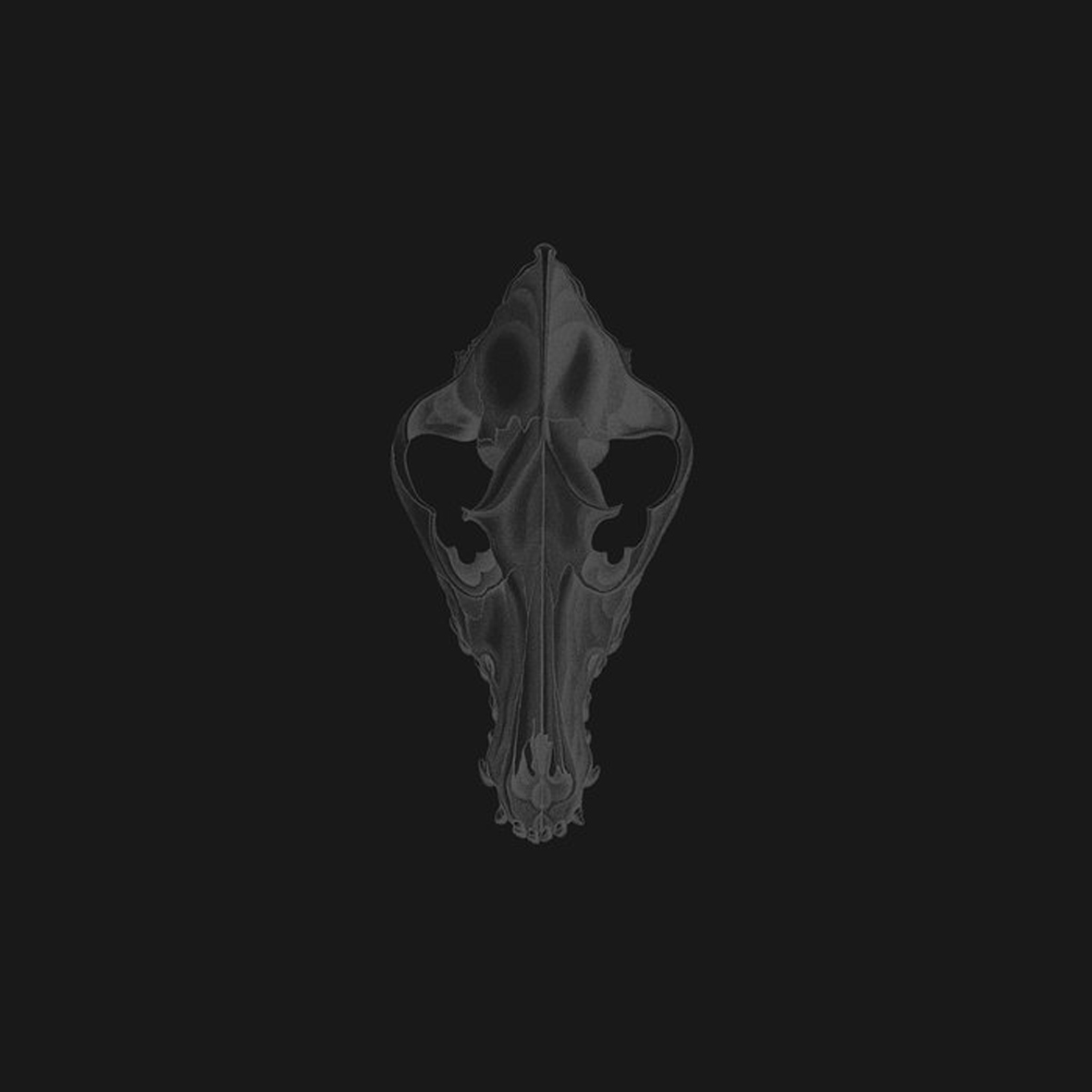 At this point, it is quite clear that The Inward Circles project is the home for Richard Skelton’s darker impulses, dealing primarily in brooding ambiance, churning violence, and grinding horror.  The big difference between Skelton and similar artists, however, lies in his scope and intensity.  This latest EP, a soundtrack to Skelton’s short film Beyond the Fell Wall, does not disappoint in those regards, as Skelton essentially creates an melancholy and spectral world, then ferociously rips it apart.  Unfortunately, it does not quite scale the heights of either The Inward Circles' debut or Skelton's amazing previous soundtrack (Memorious Earth), being a bit too short, bombastic, and single-minded to offer much more than a satisfyingly heavy catharsis.  It is still a solid and worthy release, but it is not quite "Richard Skelton" good.
At this point, it is quite clear that The Inward Circles project is the home for Richard Skelton’s darker impulses, dealing primarily in brooding ambiance, churning violence, and grinding horror.  The big difference between Skelton and similar artists, however, lies in his scope and intensity.  This latest EP, a soundtrack to Skelton’s short film Beyond the Fell Wall, does not disappoint in those regards, as Skelton essentially creates an melancholy and spectral world, then ferociously rips it apart.  Unfortunately, it does not quite scale the heights of either The Inward Circles' debut or Skelton's amazing previous soundtrack (Memorious Earth), being a bit too short, bombastic, and single-minded to offer much more than a satisfyingly heavy catharsis.  It is still a solid and worthy release, but it is not quite "Richard Skelton" good.
The film Beyond the Fell Wall is haunting series of black and white images of desolate landscapes, stones, and trees accompanying a portentous naturalist fable that describes how rivers built the world and how the power of the rivers and their successors was eventually usurped by men (who are now, of course, dismantling the world).  In that context, I suppose I have heard a music works fairly well, providing the voice of Don McCorkindale with an eerie backdrop of deep, menacing drones and ghostly, melancholy snatches of melody.  Essentially, the film is an elegy and a tour of desolation and ruin, despite its reminiscences of singing rivers and happy birds, so the unrelentingly dark tone is appropriate (if laid on a bit too thick).  Taken by itself, however, I have heard a music is a bit too heavy-handed, back-loaded, and monochromatic to stand with Skelton's better work.
The main problem is just that there is not any real beauty to be found, as it is essentially built upon little more than a hollow and ominous loop that gradually snowballs from "dark ambient" territory into a fearsome apocalypse.  To borrow the grammar of film criticism, the stakes are simply not high at all here, so the gathering storm does not elicit any emotion from me nor does it feel all that threatening.  Skelton just quickly transitions from melancholy brooding to an eruption of demonic fury.  While I certainly appreciated the eruption, I did not miss the brooding at all.  The least bit of beauty, tenderness, or fragility could have made that climax considerably more meaningful.  Thankfully, there is a consolation prize: it is still quite a spectacular show of nightmarish force, as well as an impressive bit of sound design.  When I have heard a music breaks open, it sounds like hell itself has opened up to consume the world with infernal entropy.  The 8-minute mark is especially horrific, evoking nothing less than the creeping approach of giant, grinding rusty blades.
To its credit, the few issues that I have with I have heard a music are somewhat unusual and relative ones.  For one, it feels weirdly condensed and rushed at only 19 minutes.  I like what it ultimately becomes, but it feels like it gets there too quickly to amass the necessary tension.  Also, it feels curiously undecided about whether it wants to be a soundtrack or not.  The first third is very minimal and all atmosphere, serving as a very effective backdrop for a film, but not quite compelling enough to be satisfying on its own.  The rest of the piece, however, would easily overpower any film (and consequently is mostly omitted from said film).  It feels like Skelton reworked the musical component of a more ambitious multimedia statement (there is also a "Beyond the Fell Wall" book) in hopes of creating something that could stand on its own and only succeeded partially.  I have heard a music is also the victim of its timing: had it come out five years ago, I probably would have loved it.  Instead, however, it is released in the wake of several career-defining triumphs, so my expectations have been considerably jacked-up by this point and I am quite a bit harder to impress.  Skelton fans will still undoubtedly enjoy this EP, as it showcases his rarely surfacing "grinding cosmic horror" side and offers some rewarding headphone listening, but it is ultimately a fairly minor release within his discography.
 
Read More
- Administrator
- Albums and Singles
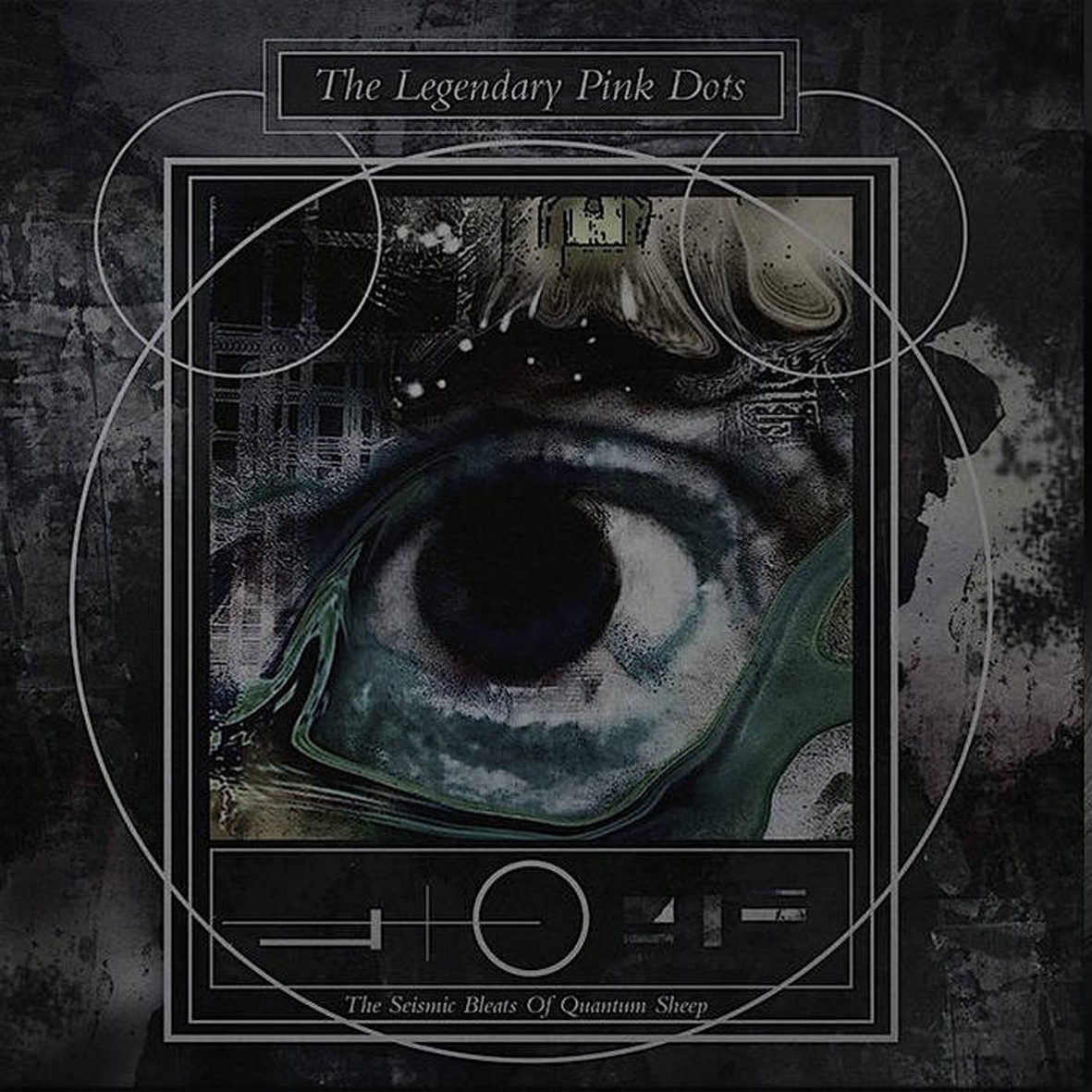 The strongest Legendary Pink Dots album of 2015 snuck in just under the wire as a digital release, with a delayed vinyl version expected in a few months from new Spanish label Abstrakce.  Intended as a "secret" sister album to the earlier Five Days, Quantum Bleats sounds a lot more like the work of an actual band, though it is no less fragmented and hallucinatory.  Everything feels a lot more deliberate, melodic, fully formed, and evocative this time around: there are a number of beautifully orchestrated passages, snatches of playful cabaret, and muscular bass lines lurking amidst all of the usual free-form psychedelic sprawl.  While it probably focuses a bit too much on the ambiguous no-man's land between "song" and "abstract experimentation" to rank among the Dots' best work, it is nevertheless quite clear that most of Edward Ka-Spel’s more inspired recent ideas found their way here.
The strongest Legendary Pink Dots album of 2015 snuck in just under the wire as a digital release, with a delayed vinyl version expected in a few months from new Spanish label Abstrakce.  Intended as a "secret" sister album to the earlier Five Days, Quantum Bleats sounds a lot more like the work of an actual band, though it is no less fragmented and hallucinatory.  Everything feels a lot more deliberate, melodic, fully formed, and evocative this time around: there are a number of beautifully orchestrated passages, snatches of playful cabaret, and muscular bass lines lurking amidst all of the usual free-form psychedelic sprawl.  While it probably focuses a bit too much on the ambiguous no-man's land between "song" and "abstract experimentation" to rank among the Dots' best work, it is nevertheless quite clear that most of Edward Ka-Spel’s more inspired recent ideas found their way here.
Curiously, Ka-Spel has described this album as "as far out as the Dots may have gone in their history."  In one way, that statement seems quite far from the mark, given the existence of truly bizarre past albums like The Creature That Tasted Sound or the Chemical Playschool series.  In another, however, Seismic Bleats is indeed a legitimately unhinged affair, so maybe the statement just warrants an asterisk with the qualification "at least, as far as song-based albums are concerned."  That, said "song-based" might also warrant an asterisk as well, as only one piece fully emerges from the kaleidoscopic fantasia to make a strong impression: the fun, lurching cabaret of "Checkpoint," which unexpectedly dissolves into a sample of an old waltz after only about two minutes.  The opening "Colonel Sanders" veers similarly close to being an instant classic, marrying a cool bass line with a strong vocal melody amidst spacey washes of synthesizers.  Again, however, things fail to progress in a conventionally satisfying linear fashion, as the song is warped and distended into near-unrecognizability around the 3-minute mark.  It feels a lot like Jamaican dub filtered through the prism of Edward Ka-Spel’s deviant mind, as recognizable bits keep surfacing from the original fully formed song, but everything else is generally replaced entirely or dissolves into vapor.
In general, the appeal of Seismic Bleats lies primarily in just waiting around to see what surfaces next from the bleary miasma of psychedelic wanderings.  Surprises definitely abound, as "Checkpoint" alone features chirping birds, wildly pitch-shifted vocals, something that sounds like a field recording from a Russian train platform, and the aforementioned foray into ballroom dance and none of it sounds at all out of place.  Soon after, a haunting tambura solo gradually dissolves into a thunderstorm, bringing the first side of the album to a close.  The second side then kicks off with a piece that initially sounds like a menacing twist on classic Pink Floyd ("Quantum Leap"), but that naturally collapses into a black void of howling cosmic horror and a deep, echoing mantra (which I believe is also being played backwards).  Once that happens, things basically stay that way: the first side of the album is devoted to far more tender, human fare and a cavalcade of small surprises, while the second side is almost entirely a dark, haunted, and sustained plunge into deep space, though it does feature an unexpected interlude of something resembling steel drums.  To their eternal credit, "Stanley Kubrick meets a resort vacation in Trinidad" is a description that I probably would not get to use for any other band besides the Dots.
Despite being quite different, there is a weird symmetry to the two sides of the album.  The first half feels like a wildly unpredictable and jumbled dream where each fresh batch of synapse firings takes me out of where I was and drops me somewhere else.  While undeniably dream-like in the extreme, it is definitely not a coherent one (even by dream logic's very loose standards).  The second half also feels like a dream, but like a dream that a broken computer in an abandoned space ship might be having.  Or perhaps one that a quantum sheep might be having.  It is hard to say.  The one thing for certain is that it is all spectacularly warped and that it all ends in brilliantly sublime fashion (with Ka-Spel repeatedly intoning "up the river…down the river" over a bed of burbling water and eerie electronic washes and drones).  This is definitely a very ambitious and intermittently fascinating work, albeit far from a perfect one.  That said, Seismic Bleats' faults seem to be completely by design: none of the best parts ever stick around long enough to be satisfying or leave a strong impression because everything is gleefully stretched, broken, pulled apart, or otherwise warped in service of Ka-Spel and company’s larger vision.  I just wish that the lulls between the best parts were a little more infrequent (and shorter).  Oh well.  I cannot complain all that much though, as I would much rather hear an inspired near-miss than anything familiar: this is a fine and deeply aberrant album and it is all the more enjoyable because it goes so far off the rails rather than merely revisiting well-worn LPD territory.
 
Read More
- Administrator
- Albums and Singles
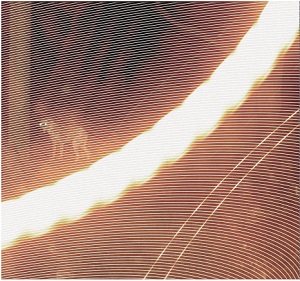 Scale, repetition, and variation have a way of bringing Morton Feldman to mind whether or not Feldman has anything to do with the matter at hand. The matter in this case is Mike Majkowski’s Bright Astonishment of the Night, the second of two full-length albums he released in 2015. The other, Neighbouring Objects, focused on the sympathetic resonances between instruments like piano, chimes, and double bass. This one focuses exclusively on the double bass over two long tracks, one of which, titled "Sleep and Oblivion," runs for over 48 minutes. Majkowski spends much of that time cycling through a series of techniques that emphasize the weight and extent of his instrument: the way it travels through the room, the way it melds into the walls at low frequencies and cuts through the air at higher ones, and the way those extremes relate. Resonance is still the subject of his work, but in this case it’s cast against a play of repetition and variation that holds equal weight.
Scale, repetition, and variation have a way of bringing Morton Feldman to mind whether or not Feldman has anything to do with the matter at hand. The matter in this case is Mike Majkowski’s Bright Astonishment of the Night, the second of two full-length albums he released in 2015. The other, Neighbouring Objects, focused on the sympathetic resonances between instruments like piano, chimes, and double bass. This one focuses exclusively on the double bass over two long tracks, one of which, titled "Sleep and Oblivion," runs for over 48 minutes. Majkowski spends much of that time cycling through a series of techniques that emphasize the weight and extent of his instrument: the way it travels through the room, the way it melds into the walls at low frequencies and cuts through the air at higher ones, and the way those extremes relate. Resonance is still the subject of his work, but in this case it’s cast against a play of repetition and variation that holds equal weight.
Time was an important concept for Morton Feldman in the latter part of his career, from 1983 until his death in 1987. It was during those four years that he completed pieces like String Quartet No. 2, For Philip Guston, and For Christian Wolff, all of which challenge performers to concentrate on exceedingly tricky scores for anywhere between two and six hours, depending on the tempo the group chooses. Mike Majkowski doesn’t make that kind of demand on his audience or on himself, but like Feldman he utilizes long periods of time to get at ideas and sounds that other musical elements aren’t as well-equipped to produce. Chief among these are the shape of sound and the shape of time.
The bulk of "Sleep and Oblivion" is composed of double bass figures that either pop and resound or flash in straight, short lines, like beams of light. The contrasting high and low tones create a gaping space between, which is filled in as each passage slows down and drifts toward silence. Just as inertia seems poised to take over, the sudden pop and large low tone that started the last section springs back and the music resumes its slow crawl forward. Majkowski returns to figures like these throughout the piece. Sometimes they sound like near exact reproductions of sections that have come before, other times they are clearly variations with different melodies or rhythms. For the most part, however, the music cleaves to the same tonal center—minor, dark and maybe a little gloomy—so what melodic variation there is is a matter of small movements up and down. The durations and rhythms are much easier to pick out and much easier to remember as iteration after iteration falls into the past.
Buried between these repetitions are some surprising tangents: the combination of bowed and plucked strings at minute 23, a long low drone that never comes back at minute 32, a unique series of percussive tones struck with only three minutes left. Folded up inside the well-established patterns and seemingly constant cycles of "Sleep and Oblivion" are these unpredictable and otherwise unrelated intervals. Majkowski spends a lot of time lulling the ears into submission, conditioning them to expect another recognizable series or another recognizable technique. This is where time and its shape become a factor. Given enough space, time obscures, hides, or otherwise erases, makes identification and remembering a task, not because it must be that way, but because the content of the music, the way it is shaped, works to the same end. The shapes of time and sound are related just like the length of a sine wave and its tone are, except that, at large distances and over long periods, the effect is the dissolution of patterns and structures. There are many places, some of them dramatic, where Majkowski could have stopped his piece, but he chooses to continue with the process instead, thereby eliminating the feeling of completion associated with resolution, whether melodic, rhythmic, or otherwise.
In light of that disjunction, "Ultramarine" is a surprise. An 18-minute coda that sticks to quickly bowed drones, it neither completes nor resolves the tension of "Sleep and Oblivion" and, because of its shorter duration, ultimately disappears into the shadow of that piece. Similar ideas are at work—the same rapid bowing is used to produce a bright harmonic glow up and down the neck for the entire piece—but the subject is more melodic and more colorful, less preoccupied with structure. Duration still matters, but in this case it serves the contradiction between the short quick movements of Majkowski’s hands and the resonant luminescence of the strings, like watching an old film on a hand-cranked projector. In any case, "Ultramarine" is more of a departure than a continuation of "Sleep and Oblivion" and probably should have been given more space than is provided. That sequencing decision is the only hiccup on an otherwise deliberate and challenging record.
samples:
 
Read More
- Administrator
- Albums and Singles
 Following up 2014's Der Totenkopf and last year’s reissue of The New Crimes, Moreno Daldosso’s newest album draws from both his past and present works, resulting in a dark and disturbing record that largely manages to achieve Daldosso’s artistic vision, with the exception of a few missteps along the way.
Following up 2014's Der Totenkopf and last year’s reissue of The New Crimes, Moreno Daldosso’s newest album draws from both his past and present works, resulting in a dark and disturbing record that largely manages to achieve Daldosso’s artistic vision, with the exception of a few missteps along the way.
Nekro is essentially, like many Murder Corporation records, a concept album based around sexual sadism and homicide.These themes are well-trodden staples of the noise/power electronics/death industrial constellation of genres, so I am always skeptical whenever I see them so overtly used by an artist.But like his previous works, Daldosso's approach to this manages to work well.For the most part, Nekro does not come off as insincere juvenile shock tactics that have been overused for the better part of the past 30 plus years, nor do they feel like the ramblings of an actually disturbed individual.Instead, and I know I have used this metaphor before, but the sound is more fitting that of an exploitive horror movie:it is over the topic and teeters on the edge of ridiculous, yet feels self-aware enough to be enjoyable for what it is.
Of the seven pieces that make up this album, the instrumental ones work the best.The opening and ending songs are perhaps the most effective, with the short "Intro" beginning the album appropriately sinister.Hollow electronics underscore what sounds like slightly processed field recordings, with hints of synth noise punctuating a wet sound akin to slogging through a flooded basement.The concluding "Dark Places" is quite literally titled, with a more musical sense of ambience to it.Bleak and awash in echoes, it closes the album on an understated, yet unsettling note.
The middle portions of the album are where the more synth and noise based sounds feature most heavily."Death Race" leads off instantly with brittle, sharp analog noises that shift in volume, with Daldosso pulling the levels back to just come back more intensely.With its minimal structure that magnifies the tiny changes in electronic pitch and rhythms, the piece channels another master of the style, Atrax Morgue, extremely well.The album's lengthy centerpiece, "Roleplay" is 13 uninterrupted minutes of surging, somewhat rhythmic electronic loops that never relent for a second.Even though repetition is the name of the game, that unyielding approach to noise just works extremely well without becoming dull.
The parts where the album does not work as well for me, however, are the similarly structured "Nekro" and "Torture Chamber".Both function more as audio set pieces than actual compositions, with the former overlaying exasperated voices and grunts that could be either of pain or pleasure, while the latter if focused on dialog which I assume was ripped from a simulated torture porn video.I assume this not only because I would not really relish the idea of listening to actual crime audio, but also the "acting" of the male performer is not all that convincing.These two are just a bit too literal for the topic, and Daldosso has proven his ability to set such uncomfortable moods by sound alone, so I feel using dialog is a bit too easy.
With the exception of those two overly blunt pieces, the remainder of Nekro is, like many slasher movies, predictable yet still compelling.I had a good idea of what this album would sound like just from the artist and artwork alone, but the bulk of it was so well executed that it made most of the shortcomings irrelevant.I always knew what to expect growing up from a Friday the 13th movie, too, but that never stopped me from enjoying most of them.
samples:
 
Read More
- Administrator
- Albums and Singles
 This drab duo first emerged a few years back as bloodless hipster darlings, their aptly-titled 2013 Matador debut Impersonator overflowing with the sort of sentiments one might encounter in the first half of an Abilify commercial. Given frontman Devon Welsh’s incidental familial connection to the world of Twin Peaks, it’s mildly amusing how much of his gloomy music with Matthew Otto recalls Julee Cruise’s songs, albeit ones hastily covered by Coldplay.
This drab duo first emerged a few years back as bloodless hipster darlings, their aptly-titled 2013 Matador debut Impersonator overflowing with the sort of sentiments one might encounter in the first half of an Abilify commercial. Given frontman Devon Welsh’s incidental familial connection to the world of Twin Peaks, it’s mildly amusing how much of his gloomy music with Matthew Otto recalls Julee Cruise’s songs, albeit ones hastily covered by Coldplay.
Still, Majical Cloudz successfully toe-tapped into the zeitgeist, endearing themselves to conflicted millennial souls who casually brand themselves online with depressive viral non sequiturs and pseudo-sadness hashtags. Their fanbase has grown with critical acclaim and related benefaction, leading to key festival placements, studio time with Grimes, and some opening tour dates with fellow melodrama marauder Lorde. On the eve of a new North American tour, they took a commercial cue from fellow Canuck Drake and dropped Wait & See, a brief odds-and-sods set of studio outtakes from the sessions for last year’s Are You Alone?. Why these tracks didn’t make the cut the first time around is beyond me, though a shrewd marketer understands the importance of leaving fans wanting more--and then selling it to them.
As has become unsettlingly par for the course, Majical Cloudz remain thoroughly mired in microcosmic bringdown. Neither Otto not Welsh demonstrate their value as songwriters or sound designers here, whether listlessly miming Joy Division on "Heaven" or limping through the emotional gauntlet of "Pretty." Placed four songs in, the latter contains a couple of prodding lyrical gotchas for those who hadn’t drifted off to sleep just yet. For a group credited by some with conveying such complex emotions, Welsh’s words mostly come across spartan and simplistic, something that proves ever more detrimental when he presents them in a sappy sing-song manner. Case in point, the title track betrays the intended heady conceit of Otto’s backwards-replayed strings by Welsh’s facile vocal delivery. An attempt at sanguinity, closer "My Heart Soaks Up Every Drop Of Your Blood" showcases just how closely Walsh can mimic Chris Martin. Taking a backseat, Otto accents a fairly basic and muted drone with a rote piano motif, permitting his cohort to croon away in his apparently limited register.
By the very end of Wait & See, their pop aspirations become painfully evident, and in turn, downright embarrassing. At best, Majical Cloudz remain a karaoke-level lounge act deceived into thinking their originals are anything more than tearjerking folly. Their bargain basement Adele schtick would be a lot more convincing if any of it felt honest. And honestly, none of it does.
Read More
- Administrator
- Albums and Singles
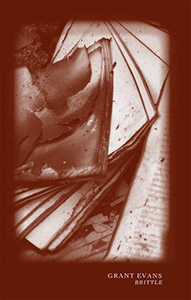 On this new tape, the prolific Evans draws from the styles he has worked in heavily before: noise, electro-acoustic, and ambient, but Brittle bears the mark of all without sounding like any one in particular. The two lengthy pieces cover a significant amount of sonic territory, and he makes remarkably diverse and complex compositions from a world of unidentifiable sound.
On this new tape, the prolific Evans draws from the styles he has worked in heavily before: noise, electro-acoustic, and ambient, but Brittle bears the mark of all without sounding like any one in particular. The two lengthy pieces cover a significant amount of sonic territory, and he makes remarkably diverse and complex compositions from a world of unidentifiable sound.
The first half of the cassette, "Pills in the Reptile House," opens with Evans employing a loop of rattling sounds almost resembling a microcassette recorder left in a running washing machine.The sound is rhythmic, yet processed to have a hollow, strange quality to it as additional textures and processed noises are worked in.Evans eventually strips the mix back, retaining the scraping but in a more open space, blended with reverberating strings that could be either piano or guitar and shrill, harsher electronics.
The composition as a whole has a clear sense of structure and organization to it, even if the sounds Evans utilizes are anything but conventional.Sounds become shimmering, metallic, and a bit dissonant at one point, before the piece overall becomes softer and is largely characterized around gentle electronics.Changes are subtler toward the conclusion, the sense of structure is lessened, and the piece concludes on stuttering, digital-like vibrations.
On the other side of the tape, Evans opens "Lineage" with a more familiar bit of overdriven noise crunch.Paired with a passage of metallic banging noises, the sound is not far removed from the likes of classic Macronympha, but the harshness is short lived as he quickly shakes things up to a more spacious sound.Besides dropping the distortion, Grant introduces birdsong recordings and subtle loops of noise.The composition eventually takes on a futuristic, but pleasant quality to the sound, without a lot of change but still complex, tightly woven layers that vary.What initially has a sci-fi, futuristic quality to it eventually is shifted away into the cold, empty expanse of deep space.
Brittle’s name is a bit misleading, because I would characterize the sounds Grant Evans generates as being closer to mud and muck as far as tactile metaphors go.It is sticky, gritty, and at times ugly sounding, but that is exactly what makes it compelling.I have no idea how he made these sounds, since almost nothing is identifiable, but I am rather glad that he did.
samples:
 
Read More
- Administrator
- Albums and Singles
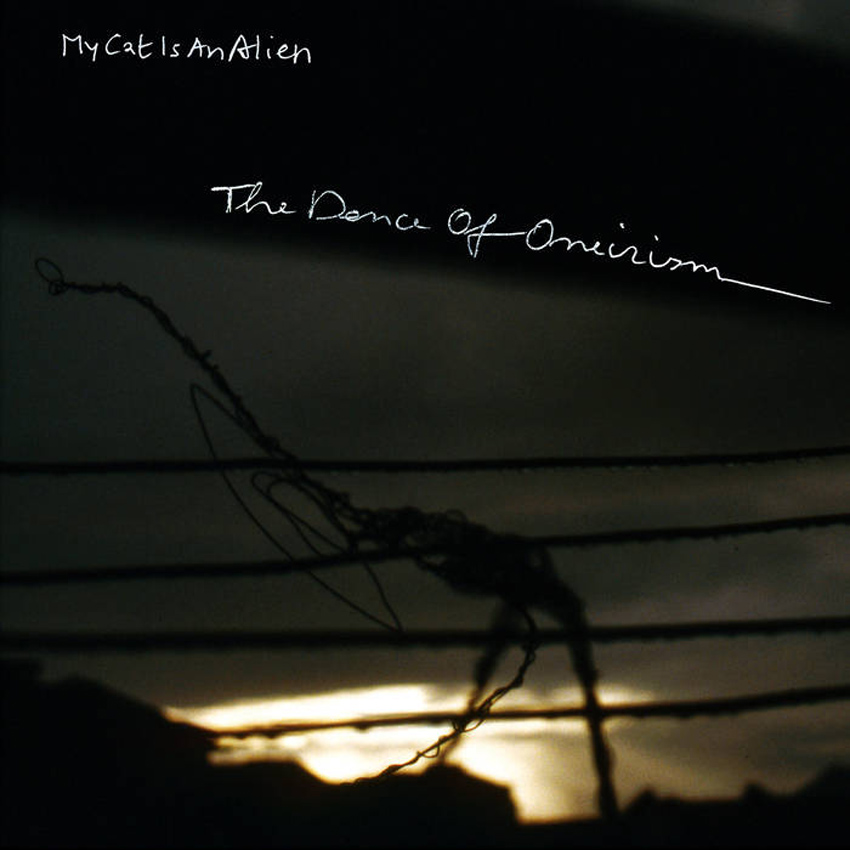 The Opalio Brothers have been on quite a hot streak in recent years, as both Psycho-System (2013) and Abstract Expressionism for the Ears (2014) were massive, tour de force plunges into hermetic, all-consuming, and completely otherworldly psychedelia.  The Dance of Oneirism masterfully continues the distillation of MCIAA's ever-evolving and singular vision, weaving its eerie, lysergic, and wonderfully disorienting spell in just under a hour (remarkably concise, given the duo's history).  As expected, it is yet another near-masterpiece of insular and visionary outsider genius and emphatically reaffirms my belief that absolutely nobody goes deeper or is more intent on scrambling minds than Roberto and Maurizio Opalio.
The Opalio Brothers have been on quite a hot streak in recent years, as both Psycho-System (2013) and Abstract Expressionism for the Ears (2014) were massive, tour de force plunges into hermetic, all-consuming, and completely otherworldly psychedelia.  The Dance of Oneirism masterfully continues the distillation of MCIAA's ever-evolving and singular vision, weaving its eerie, lysergic, and wonderfully disorienting spell in just under a hour (remarkably concise, given the duo's history).  As expected, it is yet another near-masterpiece of insular and visionary outsider genius and emphatically reaffirms my belief that absolutely nobody goes deeper or is more intent on scrambling minds than Roberto and Maurizio Opalio.
"Oneirism" is defined by the Merriam-Webster medical dictionary as "a dreamlike mental state experienced while awake," which also seems like quite an apt description My Cat is an Alien's career as a whole.  Oneirism is basically their natural state, but now I guess there is metaphorical dancing involved as well.  In any case, the oneirism on this particular album is induced primarily by Roberto Opalio’s self-made "alientronics," which weave a queasily twinkling and buzzing web of cold electronic tones throughout the album.  While there are ostensibly five different numbered pieces, The Dance of Oneirism is best understood and experienced as a whole, consisting of multiple spontaneously composed variations on a theme recorded over two days in the brothers' Western Alps studio.  Explaining the central theme is a bit tricky though, as it is a mixture of mood and complex textures rather than anything resembling a conventional structure or recurring melody.  Instead, the vein that runs throughout The Dance of Oneirism is merely the slow pulse of Roberto’s psycho-active electronics coupled with his spectral and sighing wordless vocals.  While that certainly creates an appealingly woozy and disquieting atmosphere, the Opalios are not so much a musical entity so much as a pair of psychonauts who use music as the tool for their ritualistic altered state of unreality.
The differences between the various pieces occur primarily in the periphery and in the alternately stuttering or throbbing undercurrent.  The most divergent of the lot is the uncharacteristically brief "The Dance of Oneirism #4," which boasts a stark and lurching drum machine rhythm and pushes the alientronics into the background to make room for a host of spacey whooshes and crackling static (presumably deep space transmissions).  In general, however, Roberto's buzzing and hissing electronic reverie is enhanced by Maurizio's battery of unusual string instruments, which provide an effectively sharp and earthbound foil to the dream-like nimbus of drifting bleeps, buzzes, and hums.  Naturally, Maurizio's homemade pocket harp and "self-made double-bodied string instrument" do not do anything as mundane as play chords or melodies–they too are employed in an entirely textural way, sounding like everything from broken, rusty, and distant church bells (or chimes) to a lazily plucked and detuned tambura.  Significantly, these five pieces do not quite evolve so much as sustain a vibrantly hallucinatory stasis: any sort of escalating density or compositional arc is merely a byproduct of their efforts to maintain a rich and multilayered alien headspace.
Notably, The Dance of Oneirism is largely impervious to any sort of normal critique, as what the Opalios are trying to do is so far outside the norm (even by experimental music standards) that common barometers of quality are mostly irrelevant. No one else is doing anything even remotely like this and My Cat is an Alien's only discernable influence at this point in their career seems to be themselves.  That said, all of the normal caveats for an MCIAA album apply just as much as ever: Oneirism offers absolutely nothing at all for the casual listener to grab onto, such as songcraft, hooks, power, or conventional beauty.  Instead, the Opalios expect prospective listeners to trust them enough to give both themselves and their complete attention over to a sustained dive into some very deep, dark, and strange waters. More than almost any other artist, MCIAA demand that the listener meet them halfway in order to fully reap the rewards of their work.  As far as I am concerned, however, that is a perfectly acceptable (and even welcome) pact.  It seems like a very small price to pay for the auditory equivalent of astral travel far outside my current place in the space-time continuum.  As long as My Cat is an Alien keep sending compelling and singular dispatches from their own personal rabbit hole into the subconscious, I will be eagerly waiting to experience them.
 
Read More
- Administrator
- Albums and Singles

The Moons At Your Door consists of two pieces, "The Moons At Your Door" and "There Is A GraveYard That Dwells In Man." All images on the vinyl and CD editions reproduce paintings by David, which illustrate one of the stories in his forthcoming anthology of supernatural fiction, which is also titled "The Moons At Your Door," and is published by Strange Attractor Press.
The CD edition is cosily tucked away in a digipak gatefold sleeve. The painting on the back of the LP sleeve differs from the painting on the back of the CD sleeve.
More information can be found here.
Read More
- Administrator
- Albums and Singles
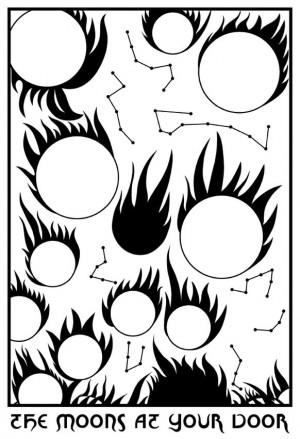
An anthology of strange fiction and hallucinatory tales, The Moons At Your Door collects chilling stories by many innovators of the weird whilst drawing attention to little-known and shamefully underrepresented or forgotten scribes of the macabre.
The Moons At Your Door collects over 30 tales, both familiar and unknown from:
Robert Aickman, Algernon Blackwood, DK Broster, AM Burrage, RW Chambers, Aleister Crowley, Elizabeth Gaskell, WW Jacobs, MR James, LA Lewis, Thomas Ligotti, Arthur Machen, Guy de Maupassant, Perrault, Thomas De Quincey, Saki, Count Stenbock and HR Wakefield. The volume also includes extracts and translations by the author from Babylonian, Coptic and Biblical texts alongside poems and fairy tales.
The book’s cover features artwork by David and design by Ania Goszczyńska; the frontispiece also reproduces a painting by David.
About the editor
As founder of the Ultimate Hallucinatory SuperGroup Current 93, David Tibet’s work as an artist and songwriter is widely known. His song cycles present a rich vein of ethereal imagery, arcane reference and the supernatural, creating their own sound-worlds of heart-felt and mysterious poignancy. The Moons At Your Door presents both a skeleton key to these domains and a gateway to the world of supernatural fiction.
David Tibet says about the book:
"I fell in Love with The Moons whom I had heard and seen at my door when I was a young boy in Malaysia. I have brought together, in this work, many of the short stories and texts that have made me what I am and what I will be, and it gives an insight into my Spheres for those who wish to read what formed me. I have never tired of these works, which still move me profoundly, and I will never will."
More information can be found here.
Read More
- Administrator
- Albums and Singles

Pinkcourtesyphone reaches out and touches someone… in this case an international call with Dutch harpist extraordinaire, Gwyneth Wentink.
Wentink weaves her magic on the triple harp, a replica of a harp from around 1600 made of 3 rows of strings instead of the more common single row. The effect is a multi-timbral coalescence of mood, a conversation between layers.
Pinkcourtesyphone thoughtfully folds, manipulates, and merges the gossamer resonances of the strolling fingers of Wentink under and over a hazy sonic shroud of worn romance and phobophobia.
This spiralling composition is created for endless heavy rotation/background consumption for an anxious and medicated society prone to ambivalence.
pinkcourtesymuse: M.Staudte
dedicated to P. Raben
“what is this ‘me’ ?” — M.Staudte
More information can be found here.
Read More
- Administrator
- Albums and Singles

Two Variations marks the return to Umor Rex of the Los Angeles based musician & producer M. Geddes Gengras, following his two volumes of "Collected Works" from 2013 and 2014. The two pieces here are the result of Gengras' continuous exercises and obsession with his modular synthesizer, yet (technique aside) Two Variations is a new statement, the reinforcement of MGG's prowess in this area, and how through these machines, he is able to build harmonic music pieces, contours between the electronic collage and concrete music.
'The first side of this tape is an edit of the first two run-throughs of a patch that I had been conceptualizing for a while before I majorly rearranged my system to accommodate this obsession. Four voltage-controlled oscillators (Make Noise Music STOs) are controlled by the output of a four-stage shift register (synthtech e102) which takes a single sequence of voltages and distributes them (in the style of a round) across the four voices. The e102 is being fed a long sequence from an Antimatter Audio Brainseed. A single clock controls the sequence speed, the shift register's 'action', and a gate sequencer (Noise Engineering Zularic Repetitor operating in a probability mode) which in turn activates four AD envelopes (Intellijel Quadra) to open the four channels of a Make Noise Quad Multi-Mode Gates module which is mixing the four voices of the VCOs. The 'delay' in the shift register (essentially how many clock pulses it takes for a note to advance to the next output) is modulated by random voltage from a Make Noise Wogglebug. The end result is two pairs of marimba mallets attached to a pair of dice. The b-side is a soundboard recording of a performance utilizing this patch, among others, from the same period.'
More information can be found here and here.
Read More

